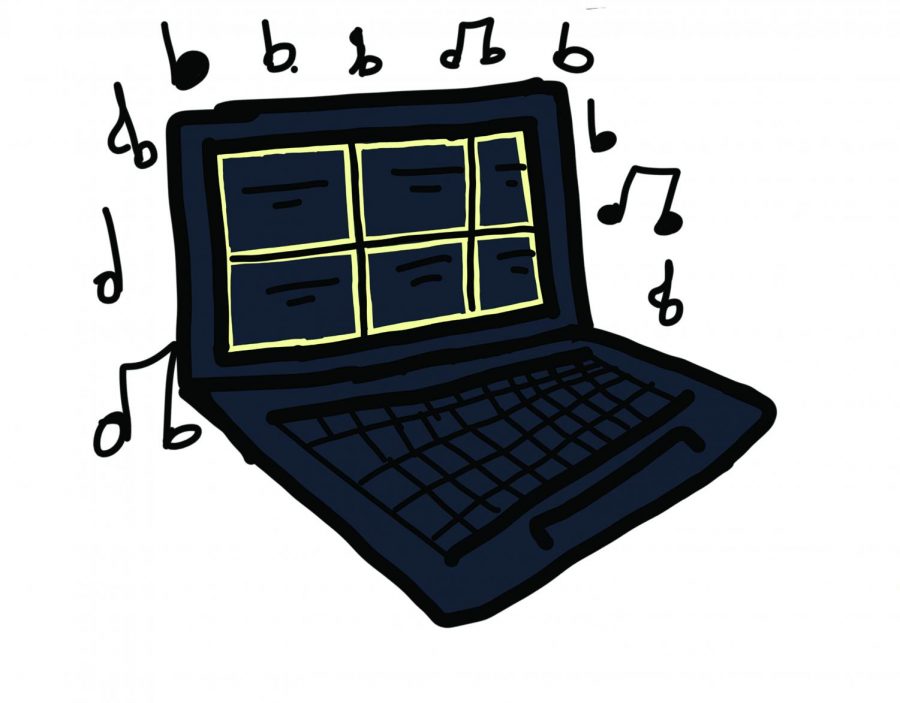The virtual reality
As the first trimester comes to an end, West High teachers share their experiences with online schooling and how they’ve adjusted to its challenges.
Teaching virtually has presented many challenges to the teachers of West High School.
Chemistry Challenges
With the typical practice of doing hands-on labs in chemistry being taken away, science teacher Megan Bildner is facing many challenges while adjusting to teaching online. Half of her day is now spent teaching live classes, and the other on various Zoom meetings and responding to emails. This caused her to make many small changes to her teaching style, from the setup of Canvas and other programs to the amount of work she assigns.

“You name it, it’s probably been adjusted,” Bildner said.
Although these changes have been made relatively easily according to Bildner, she feels that the most difficult part of online learning is missing out on getting to know her students as individuals.
“While there are many types of interactions we can have online, those quick, organic day-to-day check-ins and random conversations in between classes are so enjoyable,” Bildner said. “I feel that those moments bring a sense of camaraderie between myself, students and between peers too. I miss that.”
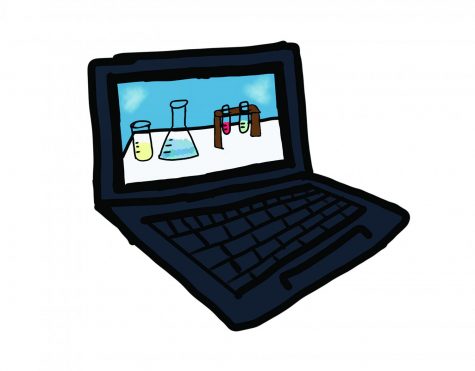
Along with this year’s missing sense of community, there are additional challenges that are unique to online science classes. Since it is no longer possible for students to do physical labs together, teachers have switched to using new platforms such as PIVOT, a website that allows students to complete virtual labs. Despite the challenges of switching to these platforms, Bildner has learned some valuable skills as a result of the new technologies she’s used.
“This experience forced me out of my comfort zone a bit and challenged me to get creative in how I was going to deliver my class content,” she said.
Bildner was both excited and nervous to start the school year, seeing it as a great opportunity to collaborate with more people across the district but also anticipating its many challenges.
“I expected that it would be a lot of work and a bit overwhelming at times,” Bildner said. “[But] it has been an overall positive experience, and I have learned a lot of new skills that I can transfer to my in-person classes someday too.”
Bildner believes there is a lot more responsibility being put on students in the online learning model. She feels that even though the situation may not be ideal, this learning experience is a blessing in disguise.
“I truly believe students are learning very important time management and interpersonal communication skills that I didn’t develop until well into college,” Bildner said. “I think, while possibly tricky and overwhelming now, these skills will have a positive impact in the future.”
Band Blues
“Doing full-time online couldn’t be any more different,” said online band director Rich Medd. Instead of the usual noises of a band playing together during class, Medd now only hears his students play when one accidentally unmutes during rehearsal. Teaching virtually, he has come to realize how crucial social interaction is to band.
“When you’re in an ensemble, you hear everybody else, you work together with everybody else, you have to compromise,” Medd said. “There’s the whole social aspect of band, and so now you’ve kind of taken all of those types of things away.”

Another challenge Medd is facing is figuring out how to best teach students when he is not interacting with them as much as he would in person.
“The best that we can do is figure out a way that students can still play, even though they can’t hear each other, and I can’t hear the students play,” Medd said. “And that’s just odd.”
Medd has been using different music technology apps such as GarageBand to put together recordings for his students to listen to and play along with. He realized that his main goal was to ensure students were able to practice and play their instruments even while attending rehearsals over Zoom.
“I just wanted students to play, and from what I can tell, I think students are,” he said.
However, without every student being able to turn on their cameras in class, it’s difficult to tell how much playing is being done.
Medd realizes that not every single student is able to have their cameras turned on for class but still finds it challenging not to see his students’ faces.
“There is a regular slew of students that have cameras on, and I can see that they’re playing, and that makes it a lot more interactive for me,” Medd said. “If I just see their name in a black box with a little red microphone turned off, sometimes I just feel like I am talking to the wall.”
Despite all of the challenges that come with online learning and teaching, Medd is still trying to keep spirits high and make band a fun experience for everyone.
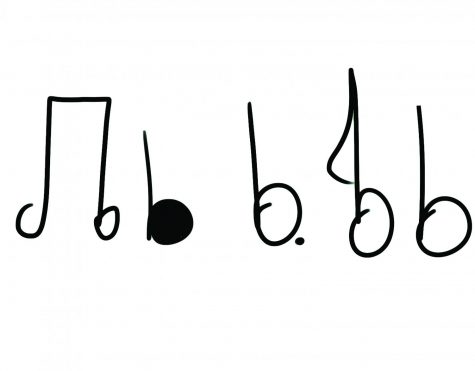
With the recording software he is using, Medd is stringing together a video of students playing “Tribute to Troy” and “Fight Song,” just like they would play when marching at football games in the past.
Medd says that one of the benefits of teaching band online is that he has gotten the chance to individually talk with his students.
“I’ve never invited students to come in and just talk with them for ten minutes and find out what they’re into and what they want to work on,” Medd said. “We had the opportunity to do that which we wouldn’t normally have.”
Cautious Choir
From wearing large, white, cone shaped masks while singing to having students on Zoom meetings trying to sing from their own homes, choir teacher Luigi Enriquez has had to find many new ways to keep music in students’ lives.
“Choir is about community building through singing and getting those experiences of hearing a chord lock in tune, sharing words of affirmation to each other or holding hands when we sing,” Enriquez said. “We don’t get to have that experience when I’m dealing with two classes at once and when we can’t really sing through a video chat.”
While he has tried to compensate as much as possible, Enriquez knows that learning choir online is difficult for many depending on their home environment.
“It is so different from what we normally do,” he said. “Singing requires a space where you can freely make sounds. In school we have the choir room for that, but each student has a different home situation, so making a loud sound might not be the best for someone.”
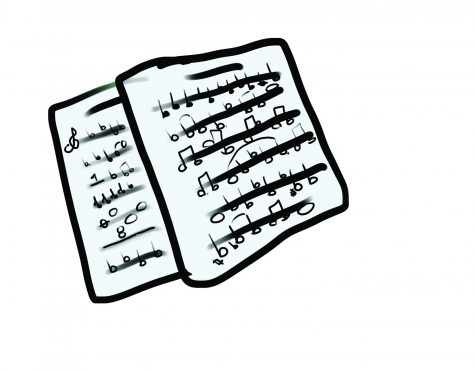
Although dealing with technological problems that come with Zoom has been strenuous, teaching hybrid has also created some challenges. In addition to wearing masks, students being split up into hybrid A, hybrid B and online groups has caused a disruption to the typical choir experience.
“It is already stressful enough to sing in front of others and have your voice on display, but it is much more difficult for singers to move their jaw or face when singing in their masks,” Enriquez said. “I’ve also had to think of ways to make singing in a smaller group and singing online more accessible and engaging.”
In Enriquez’s efforts to keep choir an interactive class, he has found ways to keep his hybrid and online groups connected by using Zoom for polls and activities. Enriquez is also organizing a virtual concert by editing students’ singing recordings into a video.
With all the new adjustments to holding choir online, there have been days for Enriquez that have not gone as planned. After long or hard days, Enriquez says his students motivate him the most.
“I appreciate the little words of thanks that they say at the end of class or the small comments of ‘It’s okay, Mr. E, you’re trying your best’ in the Zoom chats,” Enriquez said. “If a lesson doesn’t go right or a technology thing goes awry, I always try to find the light-heartedness in it all, and usually someone will make a comment in the chat or in person that will make the class laugh, and then I will also laugh, and then we all laugh, and then five minutes later, the bell rings.”
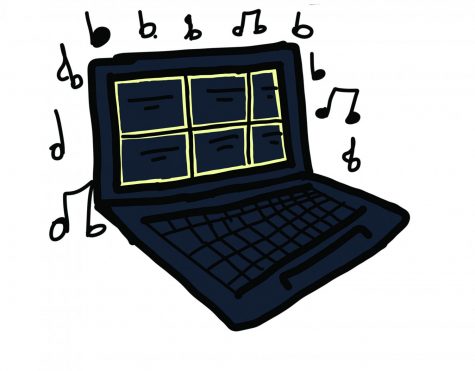
Going into the school year, Enriquez knew it would be a challenging time, but regardless of the struggles, the choirs are still singing and continuing to grow through this experience.
“I think most people like patterns and when everything has been turned upside down, what do you do?” he said. “We have never done this type of teaching and learning before, so we sing on and continue to learn from our challenges.”
When Enriquez looks back on the beginning of the school year, he wishes he could give himself this one piece of advice: “Bro, can you just relax, please?”
At the end of the day, he is confident that some good will come out of this experience.
“[We’ve learned] that relationships matter. That connection matters. We start to focus on what is really significant for our young people and how we can best help them on their educational journeys. I have focused more on who is in my classroom and have learned these small intricacies that engage good conversations and relationship building,” he said. “As much as we are distant from each other, for me, I think this has been some of the most meaningful teaching I’ve done in my young career.”
Your donation will support the student journalists of West High School. Your contribution will allow us to purchase Scholarship Yearbooks, newsroom equipment and cover our annual website hosting costs.

(they/them) Katherine Shoppa is a senior in high school and this is their third year on staff. They are the Co-Editor-in-Chief of the...
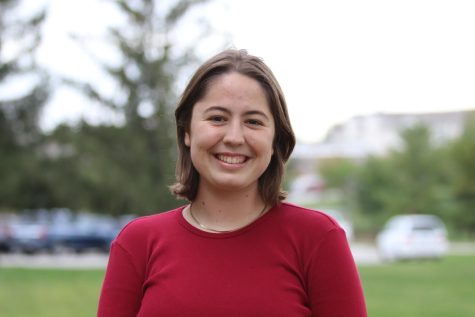
(she/her) Audrey is a senior and has been on the West Side Story staff for 3 years. She is the Copy Editor for the WSS website this year. For fun, she...

(she/her) Rachel Swack is a junior at West. This is her second year on staff working for yearbook, her first as managing editor. She enjoys photography...


